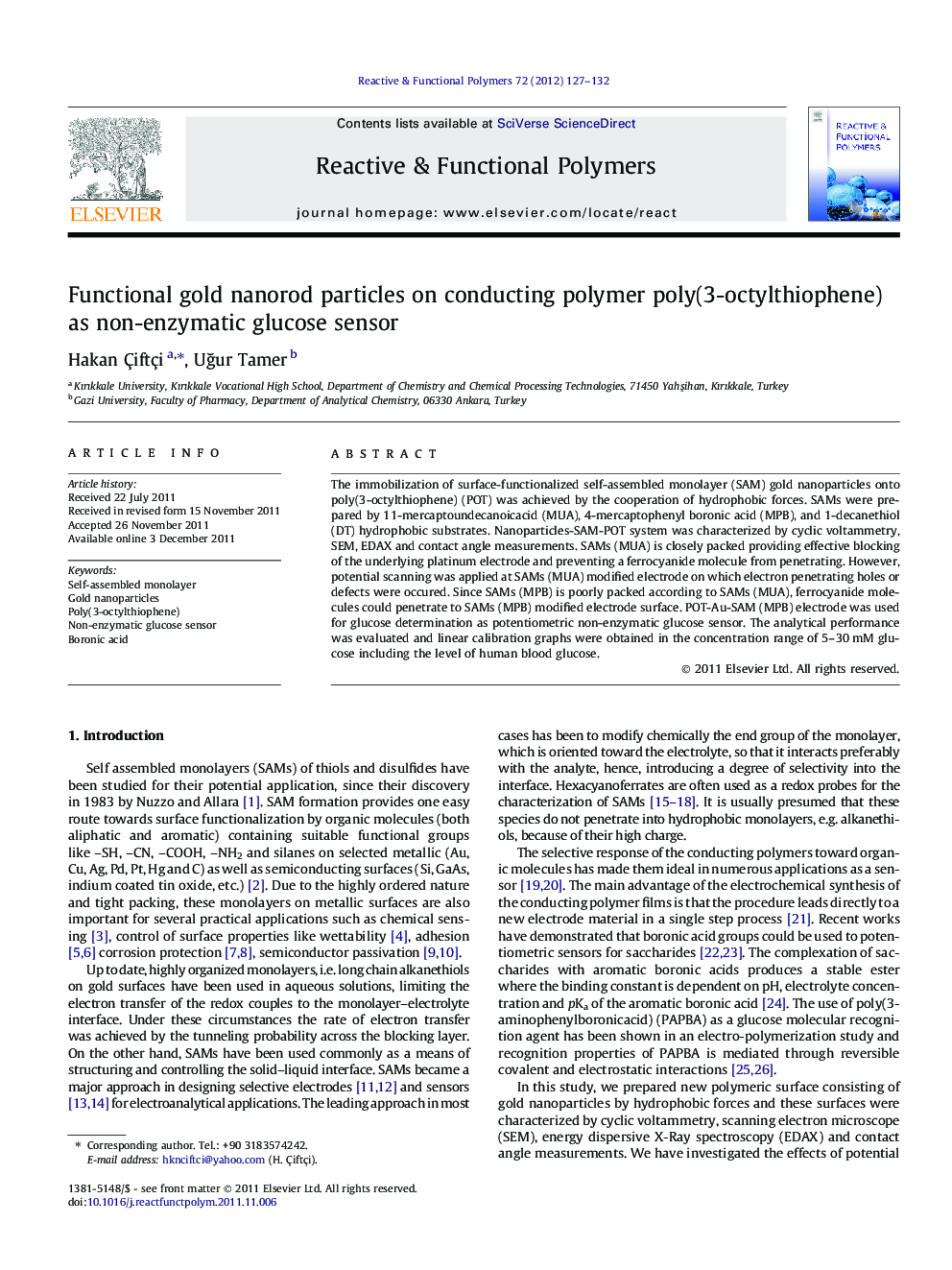| Article ID | Journal | Published Year | Pages | File Type |
|---|---|---|---|---|
| 5210405 | Reactive and Functional Polymers | 2012 | 6 Pages |
Abstract
The immobilization of surface-functionalized self-assembled monolayer (SAM) gold nanoparticles onto poly(3-octylthiophene) (POT) was achieved by the cooperation of hydrophobic forces. SAMs were prepared by 11-mercaptoundecanoicacid (MUA), 4-mercaptophenyl boronic acid (MPB), and 1-decanethiol (DT) hydrophobic substrates. Nanoparticles-SAM-POT system was characterized by cyclic voltammetry, SEM, EDAX and contact angle measurements. SAMs (MUA) is closely packed providing effective blocking of the underlying platinum electrode and preventing a ferrocyanide molecule from penetrating. However, potential scanning was applied at SAMs (MUA) modified electrode on which electron penetrating holes or defects were occured. Since SAMs (MPB) is poorly packed according to SAMs (MUA), ferrocyanide molecules could penetrate to SAMs (MPB) modified electrode surface. POT-Au-SAM (MPB) electrode was used for glucose determination as potentiometric non-enzymatic glucose sensor. The analytical performance was evaluated and linear calibration graphs were obtained in the concentration range of 5-30Â mM glucose including the level of human blood glucose.
Keywords
Related Topics
Physical Sciences and Engineering
Chemistry
Organic Chemistry
Authors
Hakan Ãiftçi, UÄur Tamer,
